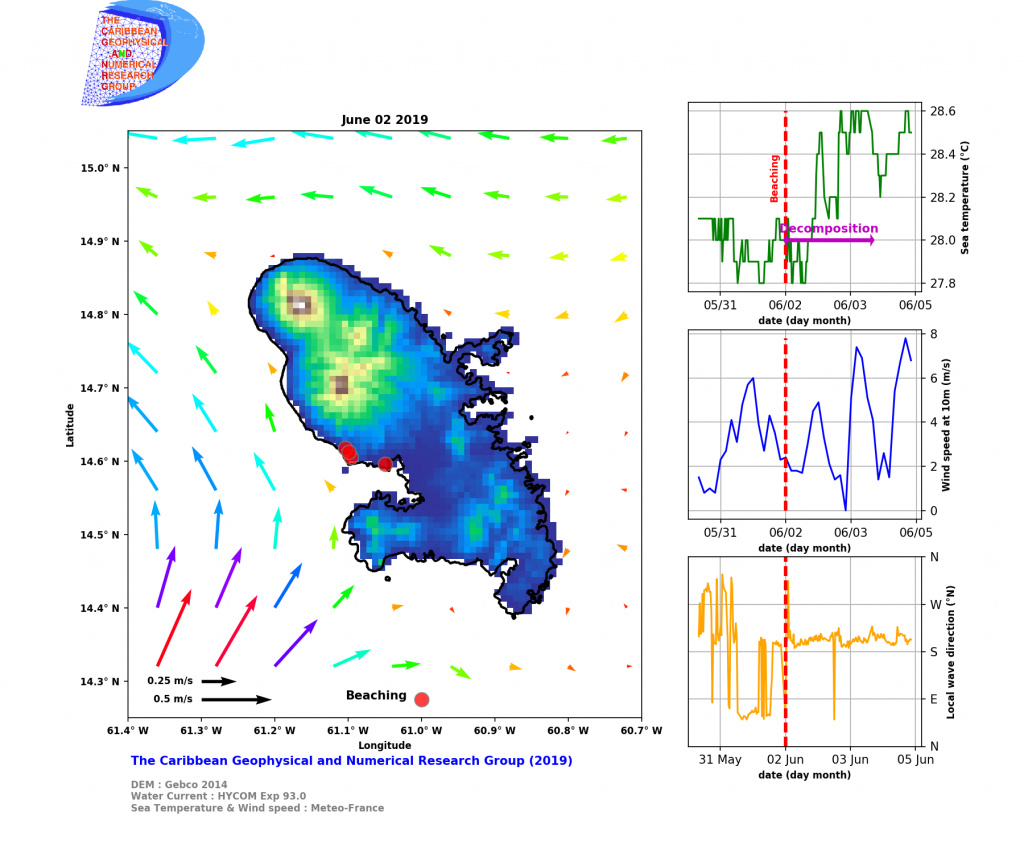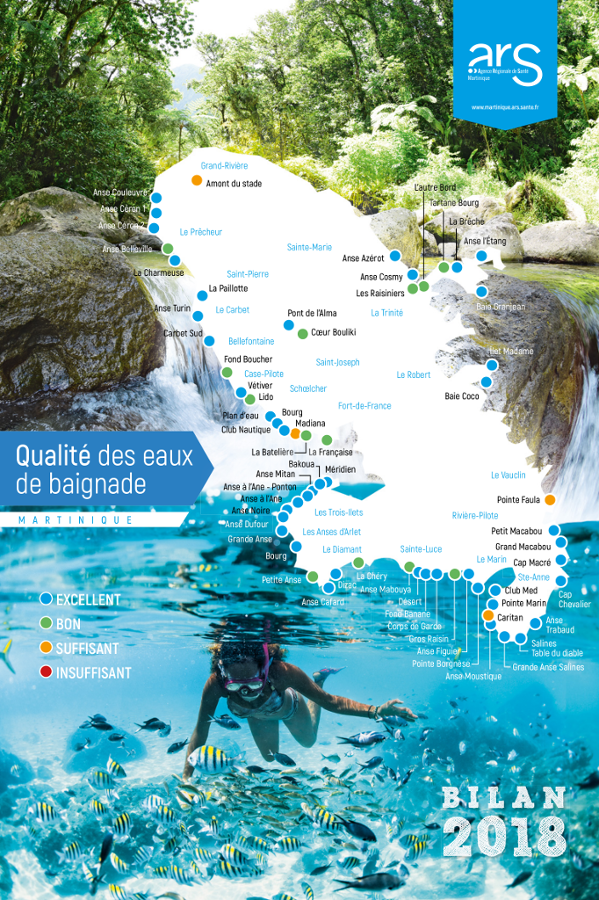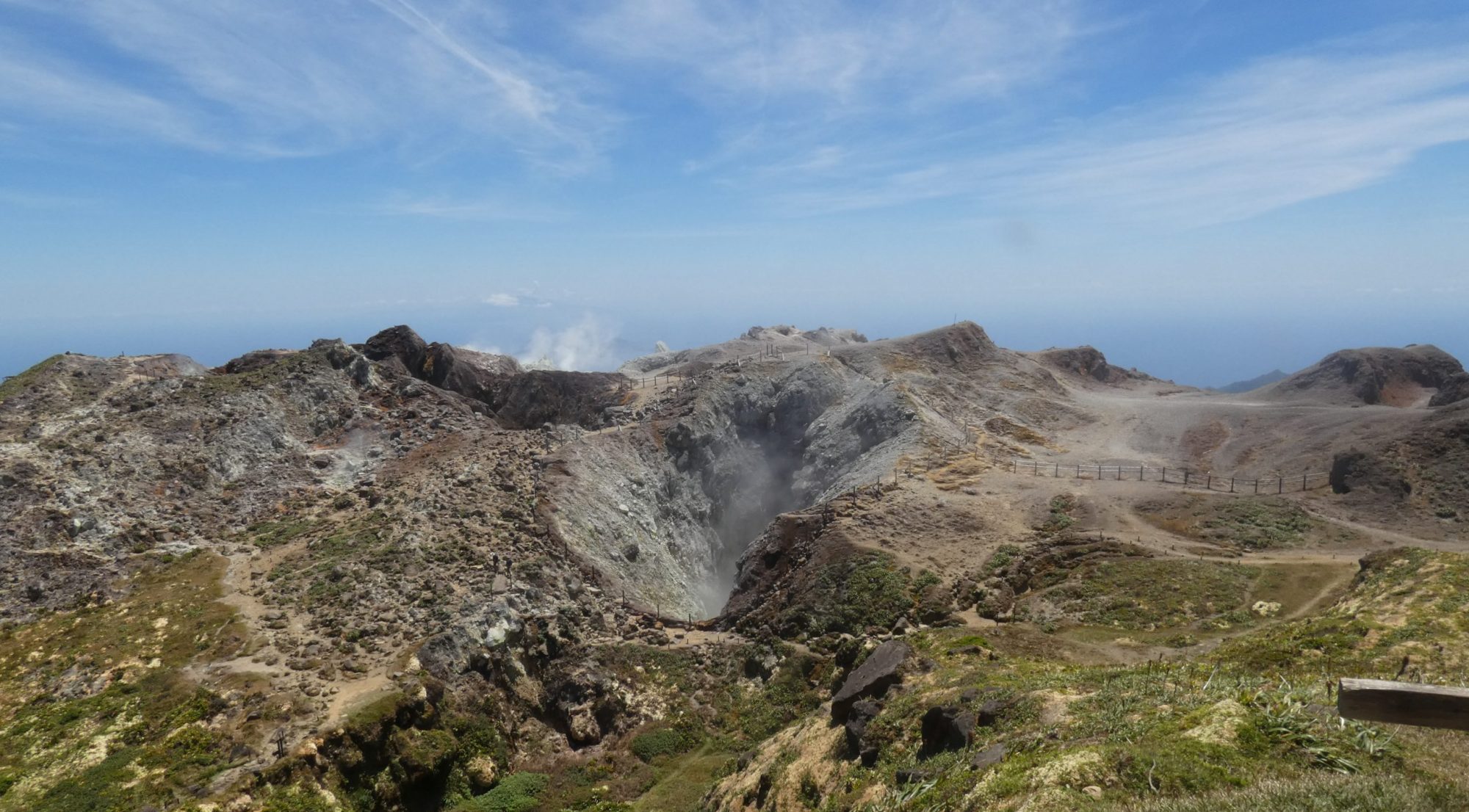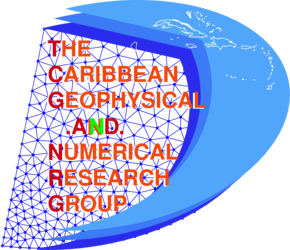
June 1st and 2nd 2019 beaching of sargassum were observed on the Caribbean coast of Martinique (Fort-de-France, Schoelcher). This type of beaching has been rare since 2011 and the over-abundance of drifting sargassum rafts in the North Atlantic and the Caribbean Sea.
Each year one or two beaching are observed on this coast from Fort-de-France to the Prêcheur. They take place only under favourable oceanographic and meteorological conditions.
The breakdown of the Trade Wind felt after the passage of a tropical wave favoured the action of the Southwest currents. Sargassum beds generally extend northward along the Caribbean coast pushed by the East wind and sea currents. This Sunday June 2nd pelagic algae were trapped by the shallow waters of creeks and bays.
In two days of presence, the decomposition of algae forced their collection on the small artificialized Cove of Batelière at Schoelcher (500 on 200m), due to emanation of di-oxyde of sulphide and ammonia (SO2, NH3). This rapid decomposition can obviously be explained by the age of the rafts that went aground. But also by relatively high water temperatures (27.9-28.5 ° C) which decreases dissolved oxygen concentrations in the water of the order of 1 to 2 mg per litre and therefore anoxic decomposition (i.e., without oxygen ).
The quality of the water is another element to take into account. Only the quality for bathing is continuously monitoring. The last map, published by the Regional Office of Health (ARS), available from (illustration 2) indicates for the beach of Batelière a ‘good’ quality. This measure is misleading because it indicates only the frequency of the presence of certain bacteria of faecal origin but not the capacity of the ecosystem to withstand anthropogenic or natural pollution.

The runoff water related to this tropical wave (give a name) to degrade the quality of the water, on the biological and physiochemical point, making this area more sensitive to the presence of large amount of living organism.
It is essential to take better account of bathing water quality in the determination of areas exposed to the risk of decomposition pollution of seaweed-type algae. To better prepare the pickup procedures and necessary equipment.
TCGNRG can help you design better risk maps for over-concentration of seaweed based on environmental conditions and better organised your organic matter collection and your recovery procedures. Do not hesitate to contact us

